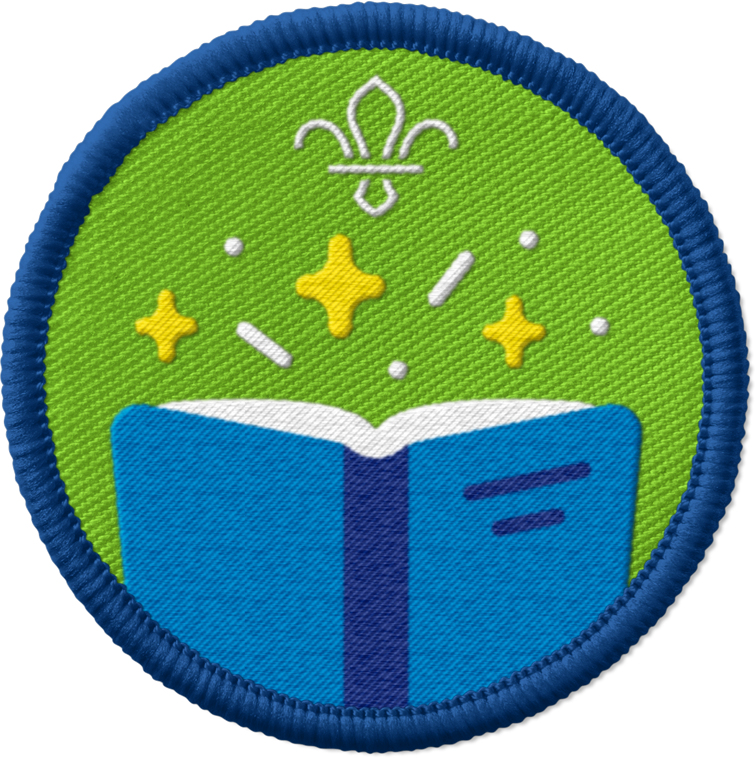
Roll and write
You’ll need
- Pens or pencils
- Dice
Before you begin
- Decide whether you want to run this activity as one base during a creative session. It may work well to give people a choice of this activity, an activity for their Artist Activity Badge, or an activity for their Entertainer Activity Badge.
- If you want to save on printing, print enough ‘Roll and write’ sheets for everyone to see one, and have plenty of plain paper for people to write on.
Roll and write
- Everyone should split into groups.
- The person leading the activity should give everyone a copy of the ‘Roll and write’ sheet and a pen or pencil. They should give each group at least one die.
- The person leading the activity should explain that the key ingredients of planning a story are deciding on who, when, where, and what.
- Everyone should take it in turns to roll the die to choose who will be the main character in their story. They should circle (or note down) which number they roll – and which character it gives them on the ‘Roll and write’ sheet.
- Everyone should repeat step four for each of the other categories to decide when their story happens, where it happens, and what the main plot point is.
- Everyone should get into a comfy space – it’s up them whether they want to go it alone or sit near someone so they can share idea.
- Everyone should get creative and write a short story (600 words is about right) that uses the plan the die gave them. They should think about how they’ll link the who, when, where, and what into a story.
- Once they’ve finished their stories, everyone should sit back and read it through. They can make any small tweaks – sometimes it’s easy to miss a mistake in the excitement of writing.
- Everyone should share their story with someone else. Once they’ve both shared their stories they should discuss the plots – however random they were.
Reflection
This activity was about trying new things. Have people created something without controlling the key ideas before? How did it feel? Sometimes trying something new can be scary, especially if people aren’t sure how it’ll go or whether they’ll succeed. The important thing is that they give it a go – it doesn’t matter if it doesn’t go to plan first time round, as there’ll be plenty to learn. Writers edit their work (and their editors do too) to make sure things come across clearly. It’s much easier to edit a ‘bad’ page than it is to edit a blank page! It’s also great to try out different ideas, perspectives, or ways of writing before you settle on your final draft.
This activity was also about communicating. Was it easy to get the words flowing? How was writing a story different to other forms of communication, for example, updating a friend on something that really happened or writing a factual essay? Would people do anything differently if they took on the challenge again?
Safety
All activities must be safely managed. You must complete a thorough risk assessment and take appropriate steps to reduce risk. Use the safety checklist to help you plan and risk assess your activity. Always get approval for the activity, and have suitable supervision and an InTouch process.
Writing can be a real challenge for some people. They may want to make a plan with a friend before they get stuck in, or maybe it’d be helpful to reduce the number of words they need to write while still keeping it a challenge.
People don’t need to physically write the story – they could use a computer or tablet, or someone could write as they speak.
People could still take part and create a plot outline using bullet points, drawings, or notes. If they want to, they could write the story up later at home (or somewhere else, for example, school or the local library). There’s no pressure or time limit to creativity.
Spelling and grammar aren’t the most important thing here – that’s what editors are for! Encourage people to give it a go and get their ideas down. It doesn’t matter if they make mistakes.
All Scout activities should be inclusive and accessible.
Why not present the stories people have created in another way? For example, you could make a short drama or film.
This is a chance for people’s imaginations to run wild as they craft creative adventures. There’s no limit to what they can dream of!


